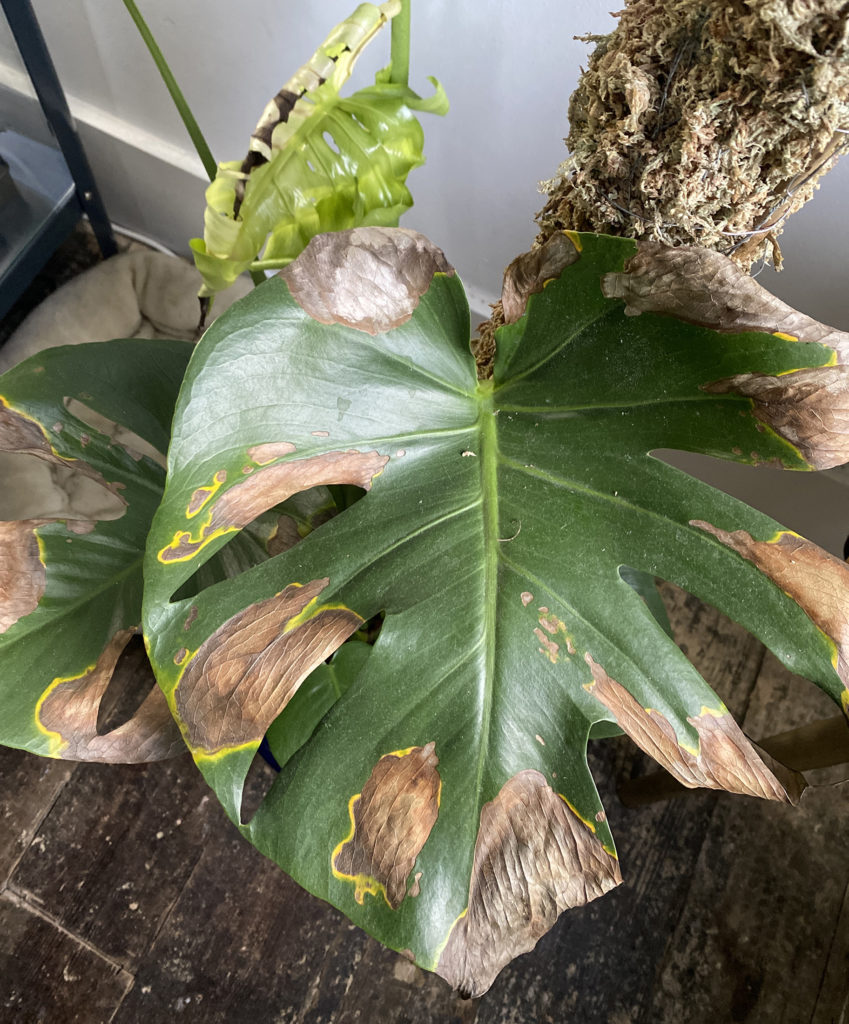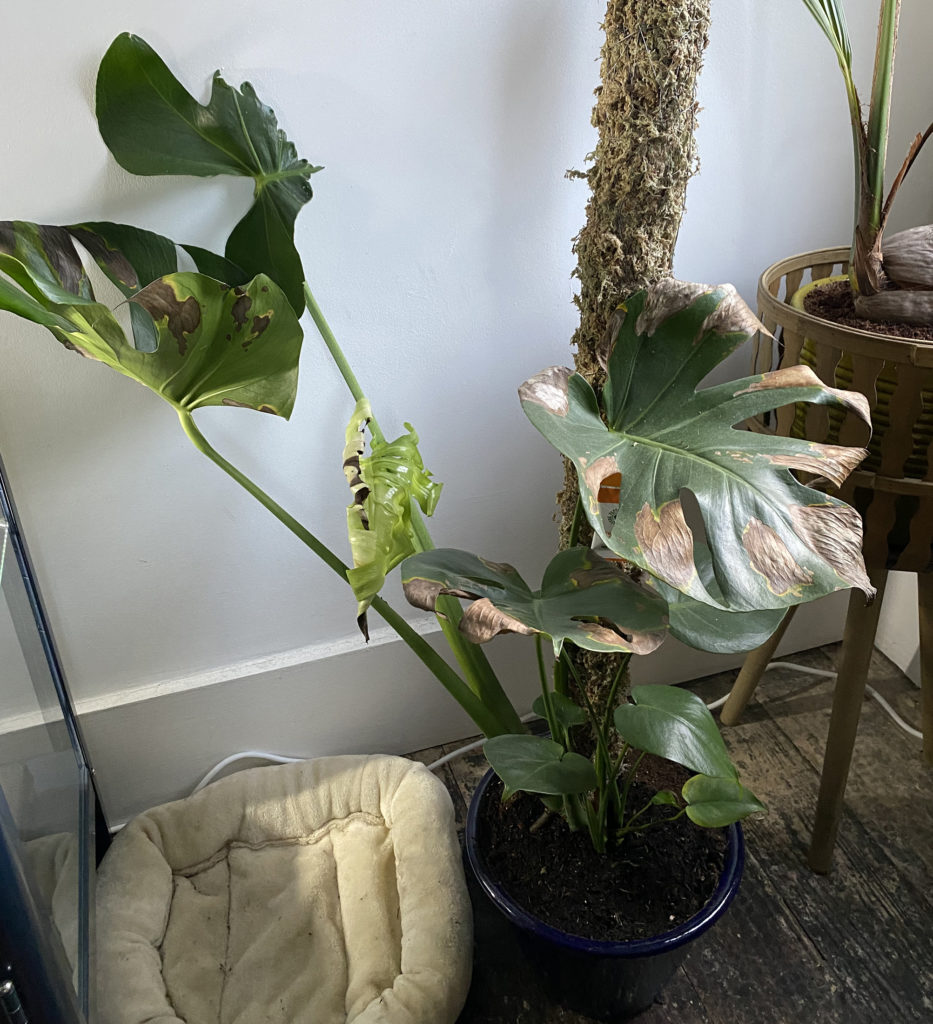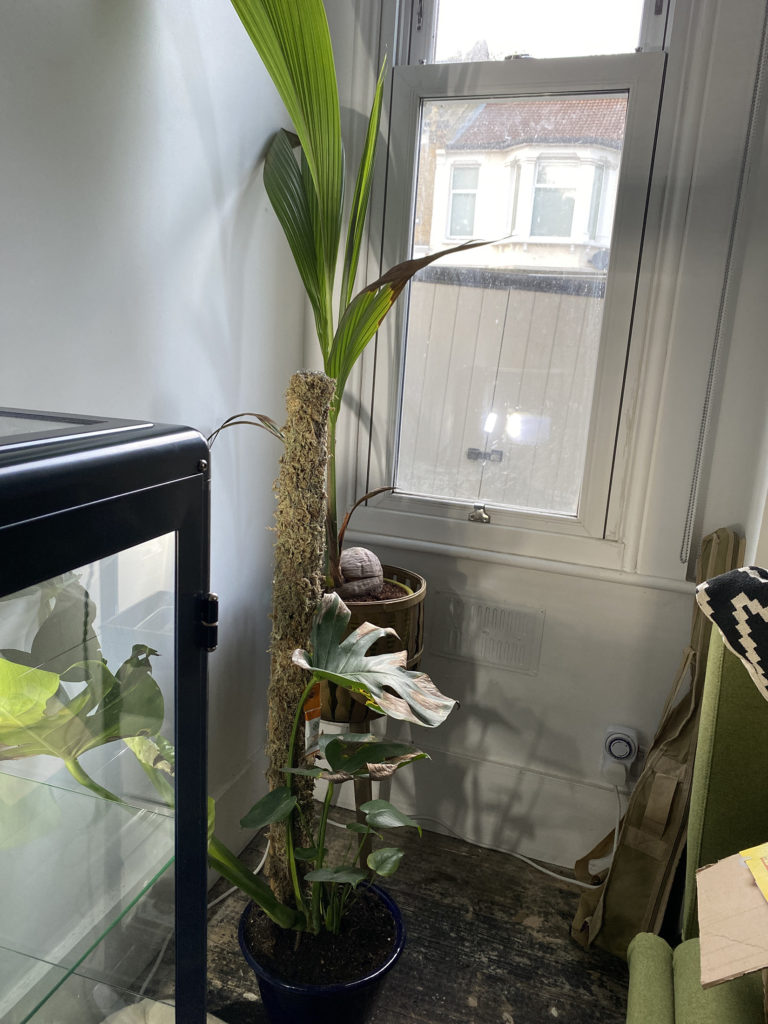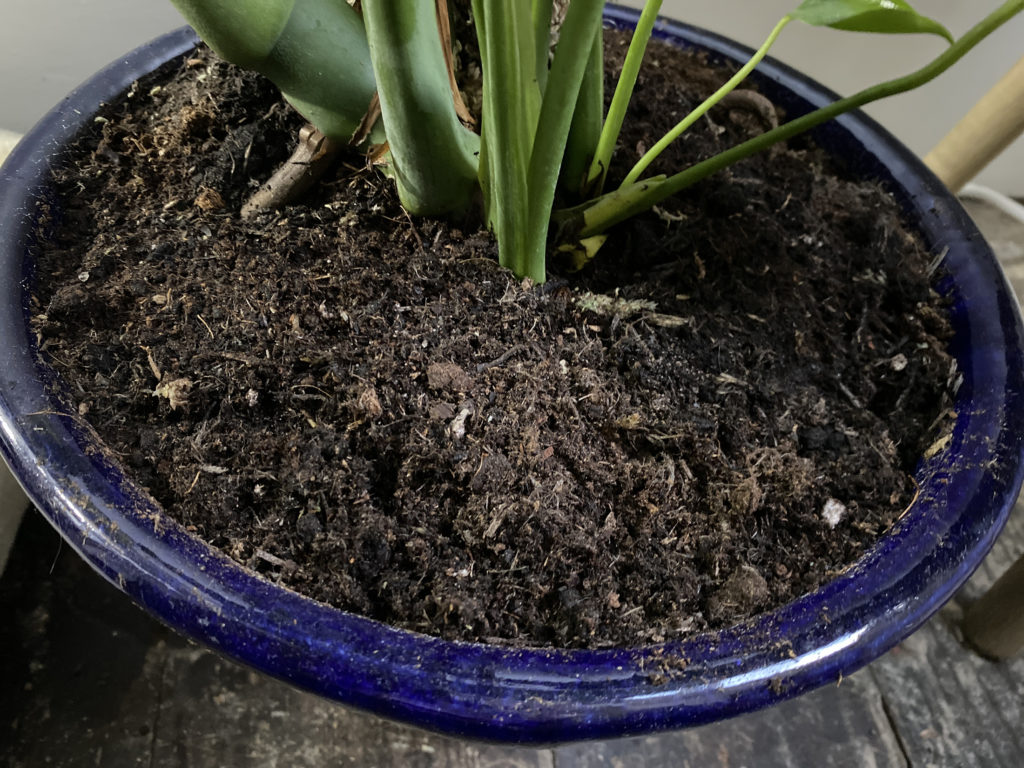Monstera brown patches
Plant: Monstera deliciosa
How long have you had the plant? 1 to 6 months
Concerns:
3 weeks ago I thought it got sun burnt. Went on holiday for 2 weeks and came back to it looking like this. The new leaf has the same issue!

Overall plant:

Light Situation: Only indirect light beside this window

How do you determine WHEN to water: I wait for the soil to become about halfway dry.
Describe HOW you water: I water the moss pole and pour a bit into the soil.
What fertilizer do you use? I have never used fertilizer.
Soil situation:

Darryl’s Analysis
Environment:
This is an okay sized window – should be okay for a Monstera deliciosa.
Effort:
Pouring small amounts of water will leave dry pockets in the long-run so ideally, when the soil has reached the appropriate dryness level (halfway is about right), then thoroughly moisten all parts of the soil and let excess drain away.
Big brown dry patches in the middle of the leaves is likely from built up minerals but newer leaves (like the one currently emerging) will exhibit dark brown patches. This is generally avoidable if the soil has good structure – porous mix and freely draining. It’s hard to see exactly what’s in your soil and how well-draining it is but it may help to repot in something with a bit more perlite (white foamy bits) and/or bark chips (like the kind used for orchids). Mix it to a ratio of around 3 parts potting soil and 1 part perlite/bark chips.
You can occasionally flush the soil by pouring enough water to fully saturate the soil and continuing to pour more so it leeches off potentially built up minerals. Beware that this also flushes away water-soluble nutrients so it’s good to water again with fertilizer so you don’t leave the soil nutrient-poor.
Here’s what I use: 3-1-2 fertilizers.
Expectations:
Unfortunately, once browning begins on leaves, there’s no way to reverse it. I’ve observed my Monstera deliciosa leaves can last around 2 years before they start getting blemishes (brown tips) and eventually turning yellow and falling off, which is to be expected at some point. Your new leaf will also always have that damage so when the leaf is fully unfurled, if you find the damage unsightly, you can cut off the damaged parts, leaving the green parts intact. Hopefully your NEW leaves won’t come out blemished.
Want to understand both the mindset and care techniques for maximum houseplant enjoyment?
Learn from my book or my online course.
Tired of your houseplants dying on you?
Sign up and I’ll do my best to help them live their best lives!